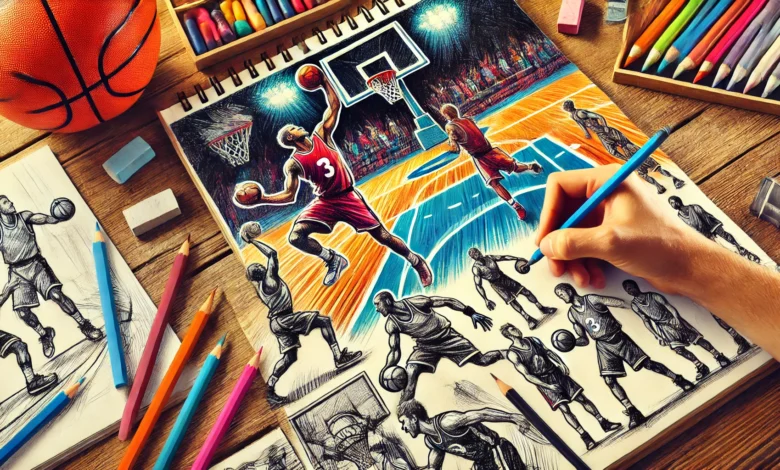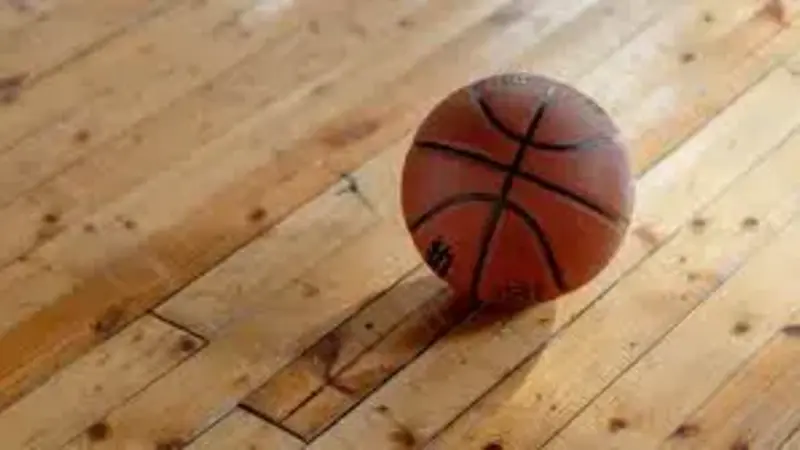The Art of Drawing:_tpnhdiv3r8= Basketball: A Complete Guide to Creating Dynamic Basketball Illustrations

Drawing:_tpnhdiv3r8= basketball is a creative and fun way to express your passion for the sport. Whether you’re an aspiring artist or a dedicated basketball fan, drawing:_tpnhdiv3r8= basketball offers an exciting challenge that combines athleticism, movement, and artistic technique. The beauty of basketball lies not only in its action-packed games but also in the way it can be brought to life on paper. In this article, we’ll explore the basics of drawing basketball, tips for mastering this art form, and how you can incorporate your love for the game into your creative pieces.
Why Draw:_tpnhdiv3r8= Basketball?

Before diving into the techniques and tools used in drawing:_tpnhdiv3r8= basketball, let’s explore why this subject is such an exciting choice for artists.
- Captures Movement: Basketball is a fast-paced sport full of energy, and drawing it gives you a chance to capture this dynamic movement. Whether it’s a player leaping for a dunk or dribbling across the court, the motion can be effectively represented in a drawing.
- Expresses Emotion: A basketball player’s face can tell a powerful story. Whether they’re focused, triumphant, or frustrated, drawing these emotions helps bring life and realism to your artwork.
- Creative Freedom: Basketball illustrations can range from realistic portraits of players to abstract interpretations of the game. This gives you the creative freedom to experiment with different styles and techniques.
Essential Tools for Drawing:_tpnhdiv3r8= Basketball
Just like any other form of art, drawing basketball requires the right set of tools. Here are some essentials you’ll need to get started:
Pencils and Erasers
- Graphite Pencils: Different pencil grades (like H, 2B, 4B) help with creating varying shades and contrasts. H pencils are ideal for fine lines, while softer B pencils are great for shading and depth.
- Kneaded Eraser: This flexible eraser can be used to lighten specific areas, providing highlights and subtle changes to shading.
Paper
- Sketch Paper: A smooth, slightly textured sketch pad is great for practicing the initial drawings.
- Bristol Paper: For detailed work and finished pieces, thicker Bristol paper offers a smooth surface for precise lines and shading.
Colored Pencils, Markers, or Paint
- If you want to add color to your drawing, colored pencils or markers can be used to bring your artwork to life. Watercolor paints can also be used for soft, blending effects.
Basic Techniques for Drawing:_tpnhdiv3r8= Basketball
Drawing basketball can be both challenging and rewarding. Here are some basic techniques to help you get started:
Start with Simple Shapes
When drawing basketball players or objects like the basketball hoop or ball, begin by breaking them down into simple shapes. This makes it easier to map out the proportions and layout of your piece. For example:
- Players: Use ovals or circles for the head and torso, lines for limbs, and larger circles for hands or feet.
- Basketball: A simple circle is the foundation of the ball, which can be detailed later with lines and texture.
Focus on Proportions
Proportions are key when drawing human figures. For basketball players, it’s essential to capture the correct body proportions to maintain realism. A typical human body is about 7 to 8 heads tall, so this rule of thumb will help keep your player’s body in balance.
- Arms and Legs: Players’ arms and legs often appear elongated due to their athletic build. Pay attention to how their muscles and joints are positioned for more accuracy.
Create Movement with Action Lines
To depict the fast-paced nature of basketball, you can use action lines—thin lines that follow the motion of the player or the ball. These lines can convey speed, direction, and power. Whether a player is jumping for a dunk or dribbling, these lines will help express their movement.
Use Shading for Depth and Realism
Shading adds dimension and depth to your drawings. Use hatching (short parallel lines) or cross-hatching (intersecting lines) to create shadows and highlights on the player’s body, the basketball, and the environment around them. This will give your artwork a more three-dimensional look.
Drawing Basketball Players: Techniques and Tips
One of the most exciting challenges in drawing:_tpnhdiv3r8= basketball is capturing the human figure in motion. Whether it’s a player leaping to take a shot or defending their opponent, the dynamic poses offer a unique challenge. Here are some tips for drawing basketball players:
Dynamic Poses
When drawing a player, focus on their movement. Whether they are shooting, dribbling, or passing, each action has a unique pose. Here are some common basketball poses to consider:
- Jump Shot: This pose includes the player in mid-air, extending their arm to release the ball. Focus on capturing the bend of the knees and the upward motion.
- Dribbling: A dribbler’s posture often includes one hand on the ball and the other for balance. Make sure to emphasize the motion of the hand pushing the ball down.
- Defensive Stance: A defensive player’s body will often be crouched low, ready to react. Keep in mind the bent knees and extended arms.
Hand and Foot Placement
Basketball players’ hands and feet are always in motion. Pay close attention to their hand positions when shooting, dribbling, or passing the ball. Similarly, the feet should show action, whether they are planted firmly on the court or in mid-step.
Drawing the Basketball Court and Background
Adding a basketball court or other elements to your drawing can enhance the overall scene. Here are some elements to consider:
- Basketball Hoop: The hoop is a focal point in many basketball drawings. When drawing the hoop, ensure that the net has texture and that the hoop is aligned properly to the player.
- Court Lines: The court has specific lines like the three-point line, free-throw line, and boundaries. These lines add realism and context to your piece.
- Spectators: If you want to add atmosphere to your drawing, include a crowd of spectators in the background. Their outlines don’t need to be detailed, but their presence can set the tone for the action.
Tips for Adding Realism to Your Drawing:_tpnhdiv3r8= Basketball
To make your drawing:_tpnhdiv3r8= basketball piece stand out, you can incorporate some advanced techniques to add realism.
- Textures: The basketball itself has a unique texture. You can depict this by adding small circular impressions on the ball, which reflect the surface grip. Similarly, use softer shading techniques for jerseys to make them appear fabric-like.
- Lighting: Think about where your light source is coming from. If you’re drawing an outdoor game, the light might come from the sun above. For indoor courts, imagine the overhead lights casting shadows on the players.
- Reflection: A well-placed shadow or reflection can make your drawing look more grounded. Whether it’s the shadow of a player on the court or a reflection of the ball bouncing, this effect can give your drawing more life.
Step-by-Step Guide: Drawing:_tpnhdiv3r8= Basketball Player in Action
Let’s break down a step-by-step process for drawing a basketball player in action:
- Start with the Basic Shapes:
- Draw circles for the head, torso, and limbs.
- Use lines to connect the shapes and define the posture.
- Refine the Outline:
- Add details to the limbs and outline the jersey, shorts, and shoes.
- Sketch in the basketball, paying attention to its position relative to the player’s hands.
- Add Facial Features:
- Draw the player’s face, focusing on the expression that matches their action (e.g., focused for a shot, determined for defense).
- Shading and Detailing:
- Add shading to the muscles, face, and ball.
- Focus on the folds of the jersey, the basketball’s texture, and shadows cast by the player’s body.
- Final Touches:
- Use action lines to indicate motion.
- Erase unnecessary lines and refine the shading.
Color in Basketball Drawings
While a black-and-white sketch can look stunning, adding color brings a whole new dimension to your drawing:_tpnhdiv3r8= basketball piece. Whether you use colored pencils, markers, or digital tools, color can make your artwork pop.
- Uniform Colors: Pay attention to the details of the team’s uniform, such as logos and stripes. If you’re drawing a real player, research the team’s colors for accuracy.
- Court Elements: Add color to the court lines, the basketball hoop, and even the floor texture to make the scene come alive.
Common Mistakes to Avoid When Drawing:_tpnhdiv3r8= Basketball
Even experienced artists make mistakes, but knowing what to avoid can help you create better drawings. Here are some common mistakes and how to avoid them:
- Proportions: If a player’s limbs are out of proportion, the drawing can look awkward. Stick to the basic proportions to keep everything balanced.
- Lack of Depth: Without shading or proper lighting, your drawing can appear flat. Always add shadows and highlights to bring your players and scenes to life.
- Ignoring Movement: Basketball is all about action. Make sure your drawing conveys the motion of the game, whether it’s a jump, pass, or dribble.
Conclusion
Drawing:_tpnhdiv3r8= basketball is a fun and rewarding challenge that allows artists to capture the energy and movement of the game. By mastering basic drawing techniques, focusing on proportions and details, and adding depth and realism, you can create artwork that truly reflects your love for the sport. Whether you’re sketching a single player or an entire game, remember that practice makes perfect. So, grab your pencils, get inspired, and start drawing the excitement of basketball today!

